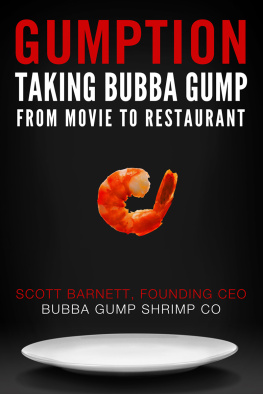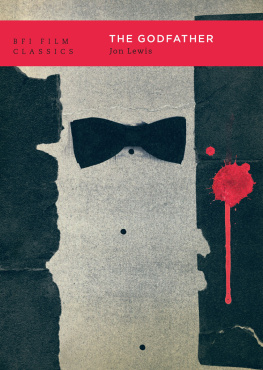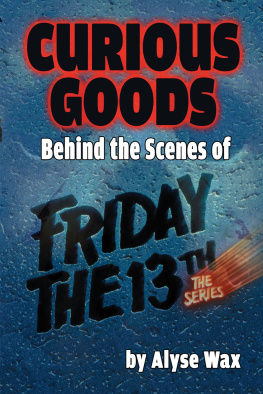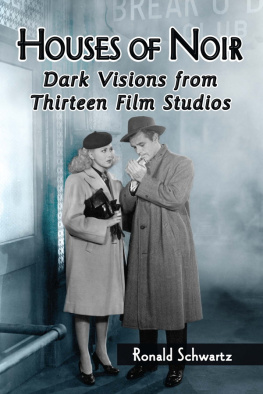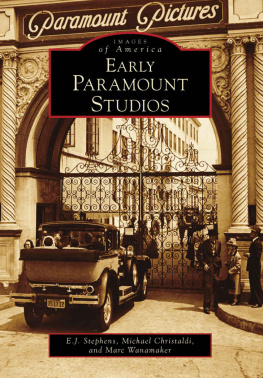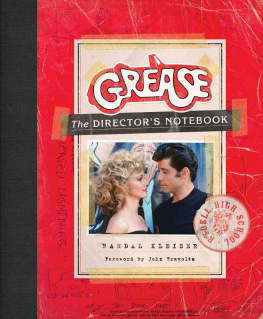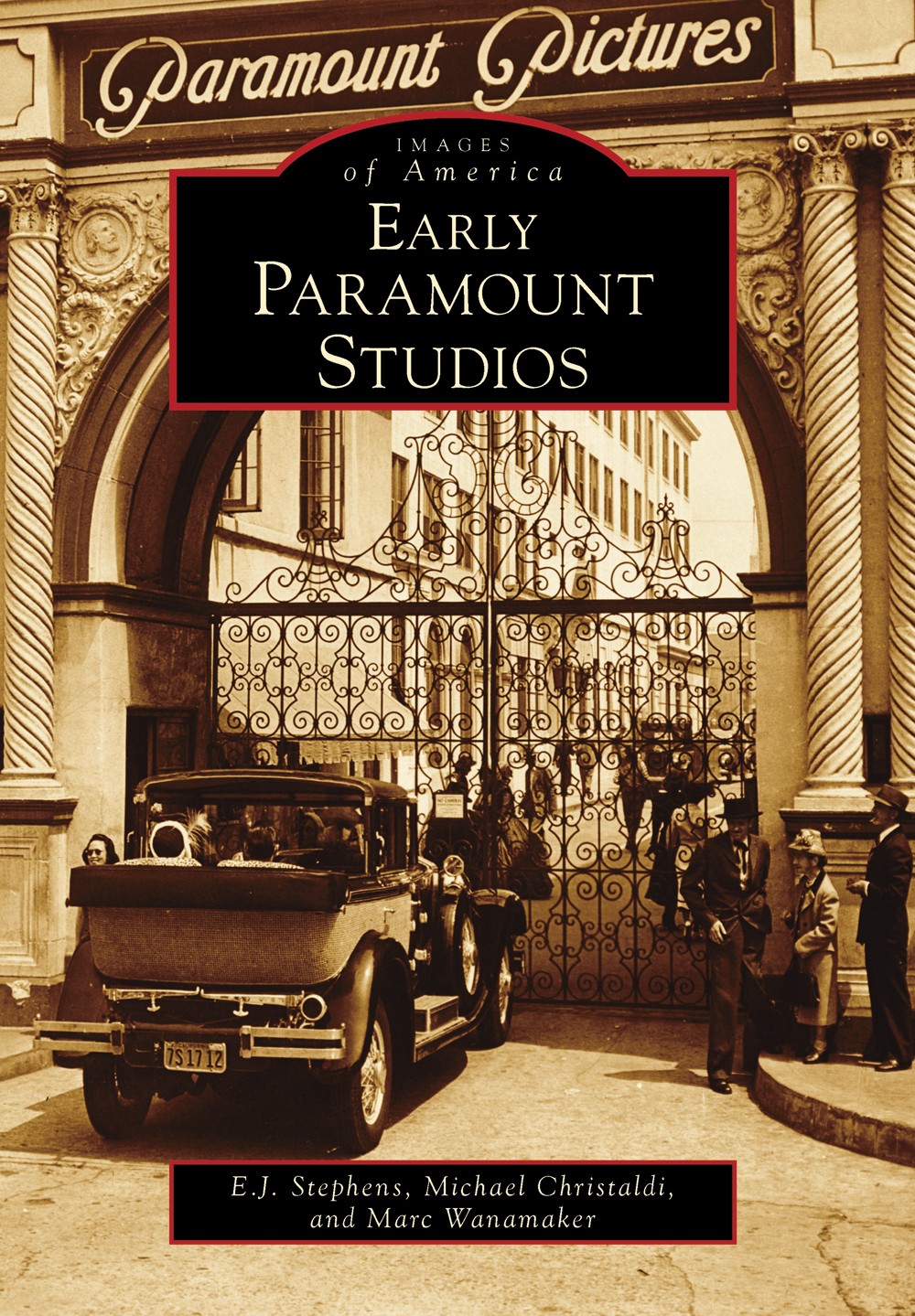
IMAGES
of America
EARLY
PARAMOUNT
STUDIOS

PARAMOUNT PICTURES LOGO, 1914. The often-modified Majestic Mountain logo has been Paramounts crest since its founding. Based on a sketch by founder W.W. Hodkinson, it is thought to have been modeled after Utahs Ben Lomond Mountain. Originally, 24 stars circled the peak, representing the two dozen stars Paramount had under contract. The amount has changed over the years, with the current number standing at 22. (Courtesy Bison Archives.)
ON THE COVER: BRONSON GATE, 1950. Art imitates life in 1950s Sunset Boulevard, a story of faded silent screen star Norma Desmond, who refuses to come to terms with a changed world. Believing she has been summoned to Paramount to discuss a starring role in a Cecil B. DeMille film, the request is actually for her vintage luxury Isotta Fraschini automobile, seen here at the Bronson Gate. (Courtesy Bison Archives.)
IMAGES
of America
EARLY
PARAMOUNT
STUDIOS
E.J. Stephens, Michael Christaldi, and Marc Wanamaker

Copyright 2013 by E.J. Stephens, Michael Christaldi, and Marc Wanamaker
ISBN 978-1-4671-3010-3
Ebook ISBN 9781439643679
Published by Arcadia Publishing
Charleston, South Carolina
Library of Congress Control Number: 2013940975
For all general information, please contact Arcadia Publishing:
Telephone 843-853-2070
Fax 843-853-0044
E-mail
For customer service and orders:
Toll-Free 1-888-313-2665
Visit us on the Internet at www.arcadiapublishing.com
This book is dedicated to the thousands of talented, hardworking Paramount Pictures employees as they embark on a second century of entertaining the world.
CONTENTS
ACKNOWLEDGMENTS
The authors would like to thank everyone at Arcadia for all the hard work, especially our publisher, Jeff Ruetsche. This book would not have been possible without the help and support of several people at Paramount, especially Josh Jack of Paramount Tours and Guest Relations and Kim Denny Pucci, Paramounts administration concierge.
E.J. Stephens: I wish to thank Marc Wanamakerwho has forgotten more about old Hollywood than the rest of the world remembersfor his encyclopedic knowledge, for his photo archives, and for taking the time to tutor two guys who love Hollywood. I also want to thank Michael Christaldi for his passion for Paramount and for suggesting the project. Nothing happens in my world without my wonderful kids, Mariah and Dylan, or my soul mate, Kimi, who is the worlds most beautiful partner, coauthor, editor, tour guide, musician, mother, wife, and friend.
Michael Christaldi: I would like to thank my daughter Angela Christaldi for constantly finding new ways to make me proud. Thanks also to my parents, Annamarie and Mario Christaldi, for always seeming to know when to catch me and when to let me fall. A big thanks to Richard Adkins of the Hollywood Heritage Museum and to several people at Paramount, including Jan Marie Johnson, Kathy Coulter, Amy Lowry, Caitlin Corns, Andrei Haq, and Giselle Fischman.
Marc Wanamaker: I wish to thank Bob Greg, formerly of Paramount Tours and Guest Relations, Paramount icon A.C. Lyles, and Lisa Jones of Paramount Office Services.
The authors were aided in their research by several publications, including The Public Is Never Wrong by Adolph Zukor; I Blow My Own Horn by Jesse L. Lasky; The Autobiography of Cecil B. DeMille; The First Tycoons by Richard Dyer MacCann; Death of the Moguls by Wheeler Winston Dixon; Empire of Dreams by Scott Eyman; Cecil B. DeMilles Hollywood by Robert S. Birchard; Goldwyn: A Biography by A. Scott Berg; Mary Pickford: Queen of the Movies by Christel Schmidt; The Paramount Story by John Douglas Eames and Robert Abele; Bringing Up Oscar: The Story of the Men and Women Who Founded the Academy by Debra Ann Pawlak; Lost Hollywood by David Wallace; The Moguls: Hollywoods Merchants of Myth by Norman Zierold; and the great articles by Anne Helen Petersen on thehairpin.com. All images are courtesy of Bison Archives.
INTRODUCTION
The audience quiets and the lights dim. The screen fills with a triangular peak towering majestically above the clouds. Standing apart from its siblings, it is quickly encircled by a tiara-like crown of stars, trailing in from off-screen, hitting their marks like skilled actors. The distinctive white cursive font appears against the azure sky above, boldly proclaiming to the audience that this is a Paramount Picture.
Paramount Pictures has been enchanting audiences around the world for over a century. While today it is part of a multinational media conglomerate, Paramounts origins can be traced to a small cadre of ambitious men. Their collective drive and genius built a Hollywood powerhouse from the ground up during the early decades of the 20th century.
The principal mover was a Hungarian Jew by the name of Adolph Zukor who was born in 1873 and lost both parents by the age of eight. At 15, he boarded a ship to America with only $40 sewn into his coat. He landed in New York, where he secured employment in an upholstery shop, earning $2 a week. Young Zukor was later hired as a furriers apprentice, doubling his salary.
Heeding Horace Greeleys advice to Go west, young man, Zukor headed to Chicago, where he started his own successful furrier business. By 1900, he was married and back in New York, living near his good friend and, for a time, business partner Marcus Loew. Loew, like Zukor, would later build his own motion picture empire.
In 1902, Zukor visited a penny arcade in Manhattan, where, for a penny, a patron could watch a short silent film or listen to a phonograph. He was so impressed by what he saw that he and a group of investors paid $75,000 for an arcade of their own.
The following year, Zukor and his partners expanded their operations by opening arcades in Newark, Philadelphia, and Boston. They proved so successful that Zukor sold off the fur company to concentrate on show business. He then invested in his own nickelodeon, where a customer could watch a one- or two-reel film for a nickel. The forever-fickle audiences soon lost interest in nickelodeons, and many theaters were converted into vaudeville houses. Zukor followed suit but kept faith in film, showing flickers between acts, often with actors reciting lines of dialogue from behind the screen.
Common wisdom at the time said that American audiences would grow bored sitting for a film that was more than a few minutes long. Going against the grain, Zukor purchased a European multi-reel religious film that proved popular with audiences. Next, he paid $40,000 for the American rights to a four-reel French film called Queen Elizabeth, which starred actress Sarah Bernhardt. Queen Elizabeth premiered in 1912 at the regal Lyceum Theatre on Broadway, a strategy that went a long way towards legitimizing films for both audiences and stage actors, who had previously looked down on the new medium.
Zukor began producing his own films, believing that if he could bring what was popular in the theater to the screen, the people would follow. One night on the subway, he came up with the slogan Famous Players in Famous Plays to market his new venture, called the Famous Players Film Company, which he created in June 1912.
Next page


